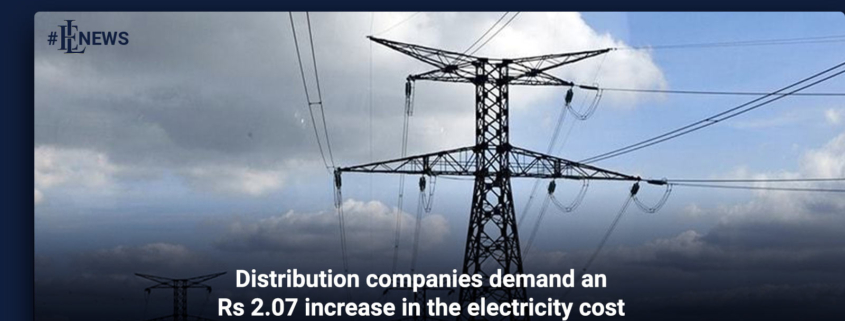Distribution companies demand an Rs2.07 increase in the electricity cost
Distribution companies demand an Rs2.07 increase in the electricity cost. Despite a healthy contribution from hydropower, the ex-Wapda distribution companies (Discos) have requested a tariff increase of approximately Rs2.07 per unit for electricity consumers who consumed electricity in August as part of monthly fuel cost adjustments (FCA), primarily due to the high cost of liquefied natural gas (LNG).
The National Electric Power Regulatory Commission has approved the petition for a public hearing on September 30 to determine if the evidence and justifications submitted by the utility firms justified the rate increases.
On the other hand, the Central Power Purchasing Agency (CPPA) has requested an additional charge of approximately Rs2.07 per unit from Discos’ customers due to higher generation costs for electricity consumed in August to generate an additional Rs32 billion in cash flows for power companies. Distribution companies demand an Rs2.07 increase in the electricity cost.
Real fuel costs rarely exceed by 44% the reference fuel costs set by the power sector’s bureaucracy a few months ago, casting doubt on their ability to forecast fuel price trends or abrupt spikes in imported oil prices. Pending regulator approval, the increased electricity rates would be recovered from consumers in the next billing month (October). Distribution companies demand an Rs2.07 increase in the electricity cost.
According to the CPPA, Discos charged consumers a reference fuel pricing of Rs4.73 per unit in August, while real fuel costs were Rs6.805 per unit, implying that it should charge consumers an additional Rs2.07 per unit in the coming month. Distribution companies demand an Rs2.07 increase in the electricity cost.
Surprisingly, hydropower resources provided about 35% of the power supply at free cost. On the other hand, while LNG-based power contributed 18% of total electricity generation, its fuel cost jumped by 28% since June.
According to the CPPA, overall energy generation from all sources reached 16,078 gigawatt-hours (Gwh) in August at the cost of Rs103 billion or Rs6.41 per unit. Delivered around 15,590 Gwh to Discos for Rs106 billion, or an average of Rs6.80 per unit.
Read more with EL news : Land acquisition for the 300MW Balakot power plant project has begun
Hydropower generation contributed 30pc to the overall energy mix in July, 29.4pc in June, and 26.6pc in May, compared to 35pc in August. In August, coal generation accounted for 14pc of total electricity generation, down from 18pc in June and 20pc in May. On the other hand, generation from oil-fired furnace plants was 10.12 percent in August, 14 percent in June, 6 percent in May, and 2.62 percent in April. In August, RLNG-based power generation contributed 18pc to the national grid, down from 20pc in July, 18.8pc in June, and 22pc in May. As in previous months, the share of local gas-fired power remained nearly steady at 8.17pc in August.
On the other hand, nuclear power’s contribution to the electricity mix fell marginally to 10% in August, down from 11.27pc in June and 10.2pc a month earlier. Wind energy and bagasse combined accounted for 4% of the total. Distribution companies demand an Rs2.07 increase in the electricity cost.
Additionally, the cost of coal-based fuel jumped to Rs9 per unit from Rs8 per unit over the last few months. On the other hand, the cost of nuclear energy fuel was Rs1 per unit, whereas the cost of electricity generated from local gas was Rs8.3 per unit.
The electricity imported from Iran cost Rs12.35 per unit and contributed only 0.28 percent to the overall power supply. The most expensive generation occurred in August at Rs18.24 per unit from furnace oil, up from Rs14.52 per unit a month earlier, while a small production occurred at Rs22.6 per unit from diesel.
Changes in fuel costs are passed on to consumers automatically every month under the tariff mechanism, while quarterly tariff adjustments to account for variations in power purchase prices, capacity charges, variable operation and maintenance costs, system use charges, and the impact of transmission and distribution losses are built into the base tariff by the federal government.
Keep up with Estate Land Marketing for news and updates.




Leave a Reply
Want to join the discussion?Feel free to contribute!